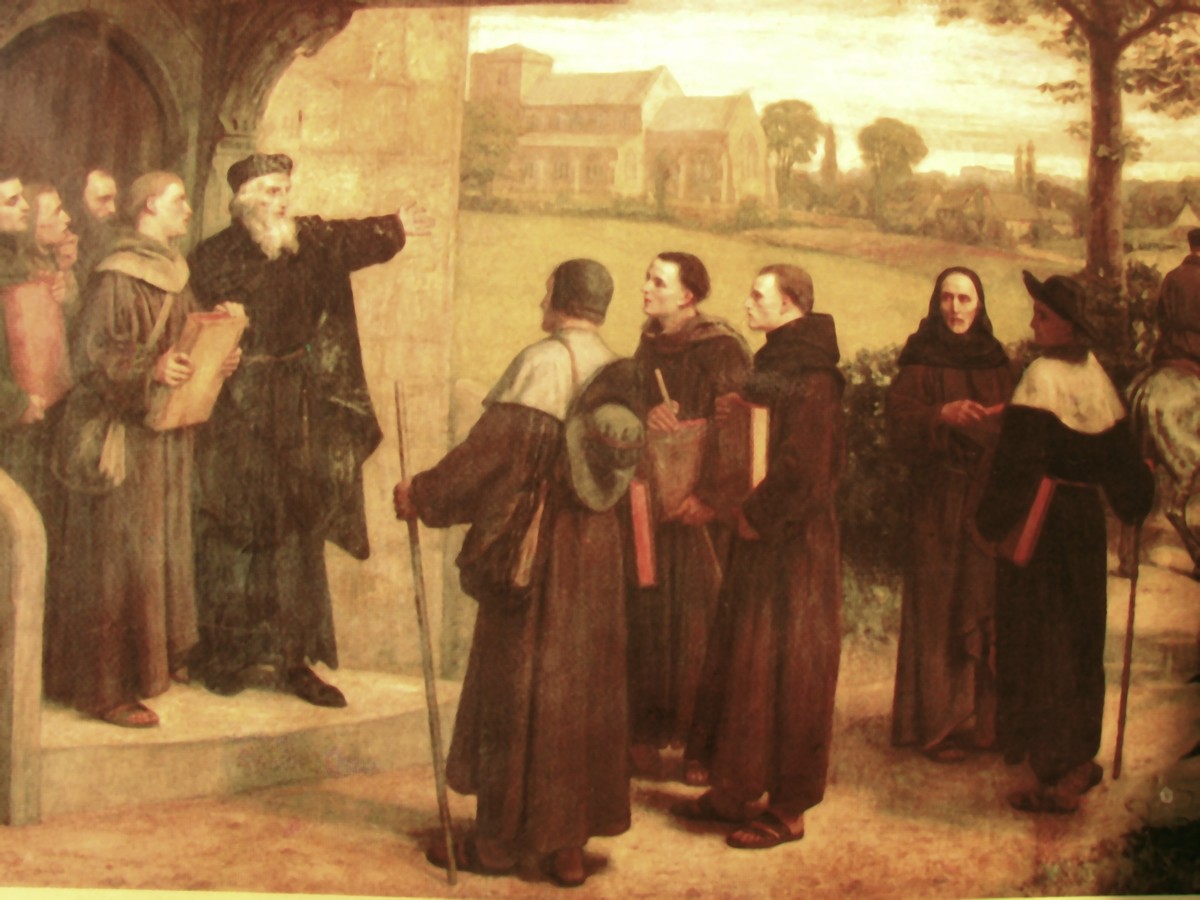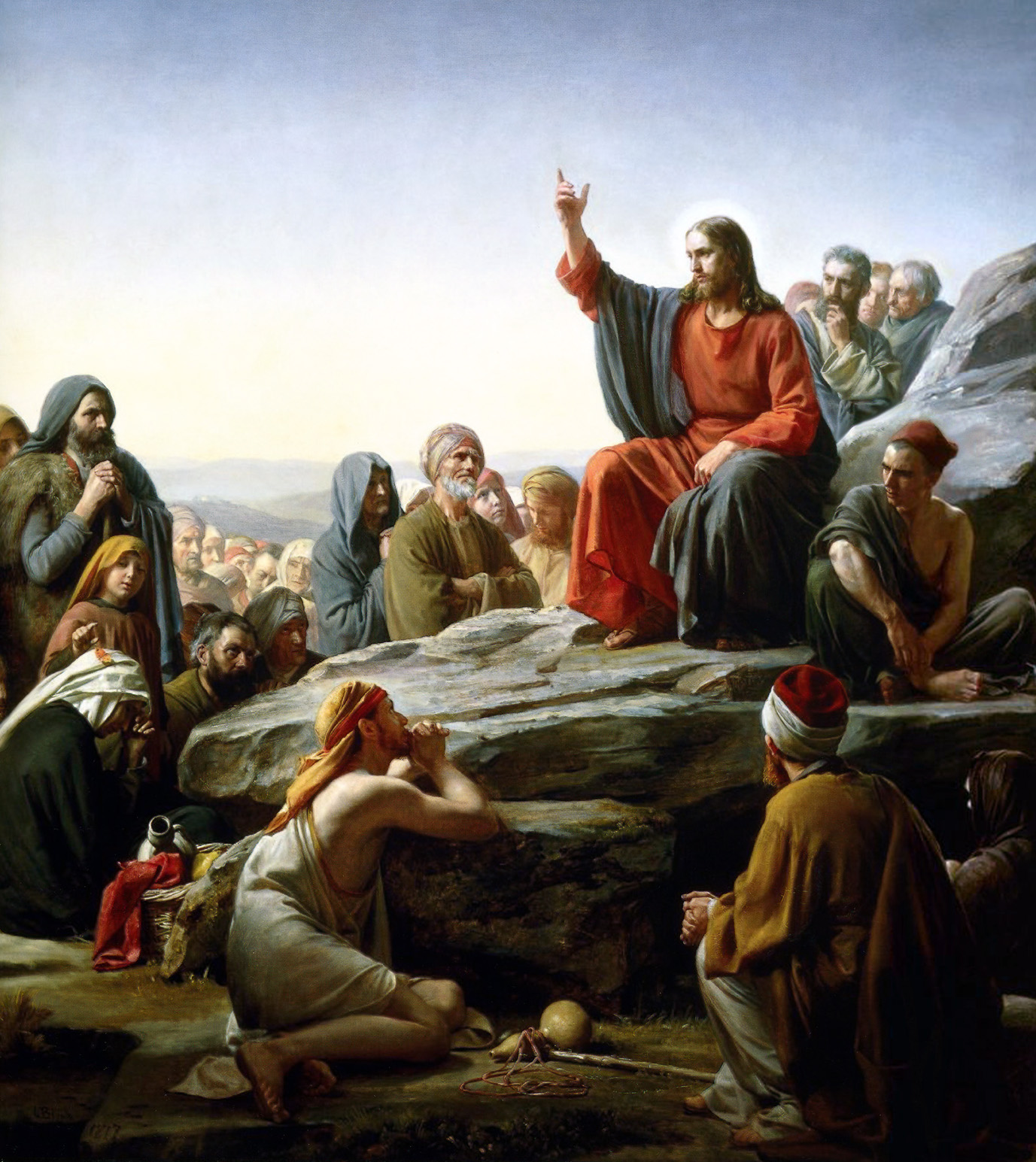|
Agnes Ashford
Agnes Ashford (fl. 15th. century) was a Christian evangelist. In the 15th Century, Bishop Longland of Lincoln was investigating the activities of the Lollards. His people were informed that Ashford had taught "part of the Sermon on the Mount" to James Morden. Before six bishops, Ashford was warned not to teach these things, even to her own children. Witnesses against her included her son Thomas Tredway, who testified that she had forbidden him to worship the images of saints (see idolatry, iconoclasm Iconoclasm (from Ancient Greek, Greek: grc, wikt:εἰκών, εἰκών, lit=figure, icon, translit=eikṓn, label=none + grc, wikt:κλάω, κλάω, lit=to break, translit=kláō, label=none)From grc, wikt:εἰκών, εἰκών + wi ...). References {{DEFAULTSORT:Ashford, Agnes Lollards 15th-century English women 15th-century English people Year of birth missing Year of death missing ... [...More Info...] [...Related Items...] OR: [Wikipedia] [Google] [Baidu] |
Floruit
''Floruit'' (; abbreviated fl. or occasionally flor.; from Latin for "they flourished") denotes a date or period during which a person was known to have been alive or active. In English, the unabbreviated word may also be used as a noun indicating the time when someone flourished. Etymology and use la, flōruit is the third-person singular perfect active indicative of the Latin verb ', ' "to bloom, flower, or flourish", from the noun ', ', "flower". Broadly, the term is employed in reference to the peak of activity for a person or movement. More specifically, it often is used in genealogy and historical writing when a person's birth or death dates are unknown, but some other evidence exists that indicates when they were alive. For example, if there are wills attested by John Jones in 1204, and 1229, and a record of his marriage in 1197, a record concerning him might be written as "John Jones (fl. 1197–1229)". The term is often used in art history when dating the career ... [...More Info...] [...Related Items...] OR: [Wikipedia] [Google] [Baidu] |
John Longland
John Longland (1473 – 7 May 1547) was the English Dean of Salisbury from 1514 to 1521 and Bishop of Lincoln from 1521 to his death in 1547. Career He was made a Demy at Magdalen College, Oxford in 1491 and became a Fellow. He was King Henry VIII's confessor and was said to have been one of those who first persuaded the King that he should annul his marriage to Catherine of Aragon. In 1519 he was appointed Canon of the sixth stall at St George's Chapel, Windsor Castle, a position he held until 1520. He was also Lord Almoner from c.1521. He was consecrated a bishop on 5 May 1521, by William Warham, Archbishop of Canterbury, assisted by John Fisher, Bishop of Rochester; Nicholas West, Bishop of Ely; and John Vesey, Bishop of Exeter. During the English Reformation, he was among the conservative bishops, recognizing Transubstantiation. His conservatism is attested to by his complaint in 1536 to Thomas Cromwell about Protestant preachers in his diocese.Eamon Duffy, ''The Strippi ... [...More Info...] [...Related Items...] OR: [Wikipedia] [Google] [Baidu] |
Lollards
Lollardy, also known as Lollardism or the Lollard movement, was a proto-Protestant Christian religious movement that existed from the mid-14th century until the 16th-century English Reformation. It was initially led by John Wycliffe, a Catholic theologian who was dismissed from the University of Oxford in 1381 for criticism of the Roman Catholic Church. The Lollards' demands were primarily for reform of Western Christianity. They formulated their beliefs in the Twelve Conclusions of the Lollards. Etymology ''Lollard'', ''Lollardi'', or ''Loller'' was the popular derogatory nickname given to those without an academic background, educated (if at all) only in English, who were reputed to follow the teachings of John Wycliffe in particular, and were certainly considerably energized by the translation of the Bible into the English language. By the mid-15th century, "lollard" had come to mean a heretic in general. The alternative, "Wycliffite", is generally accepted to be a more neu ... [...More Info...] [...Related Items...] OR: [Wikipedia] [Google] [Baidu] |
Sermon On The Mount
The Sermon on the Mount (anglicized from the Matthean Vulgate Latin section title: ) is a collection of sayings attributed to Jesus of Nazareth found in the Gospel of Matthew (chapters 5, 6, and 7). that emphasizes his moral teachings. It is the first of five discourses in the Gospel and has been one of the most widely quoted sections of the Gospels.. pages xi–xiv. Background and setting The Sermon on the Mount is placed relatively early in Matthew's portrayal of Jesus' ministry--following, in chapter 3, his baptism by John and, in chapter 4, his sojourn and temptation in the desert, his call of four disciples, and his early preaching in Galilee. The five discourses in the Gospel of Matthew are: the Sermon on the Mount (5-7), the discourse on discipleship (10), the discourse of parables (13), the discourse on the community of faith (18), and the discourse on future events (24-25). Also, like all the other "discourses," this one has Matthew's concluding statement ... [...More Info...] [...Related Items...] OR: [Wikipedia] [Google] [Baidu] |
Bishop
A bishop is an ordained clergy member who is entrusted with a position of authority and oversight in a religious institution. In Christianity, bishops are normally responsible for the governance of dioceses. The role or office of bishop is called episcopacy. Organizationally, several Christian denominations utilize ecclesiastical structures that call for the position of bishops, while other denominations have dispensed with this office, seeing it as a symbol of power. Bishops have also exercised political authority. Traditionally, bishops claim apostolic succession, a direct historical lineage dating back to the original Twelve Apostles or Saint Paul. The bishops are by doctrine understood as those who possess the full priesthood given by Jesus Christ, and therefore may ordain other clergy, including other bishops. A person ordained as a deacon, priest (i.e. presbyter), and then bishop is understood to hold the fullness of the ministerial priesthood, given responsibility b ... [...More Info...] [...Related Items...] OR: [Wikipedia] [Google] [Baidu] |
Idolatry
Idolatry is the worship of a cult image or "idol" as though it were God. In Abrahamic religions (namely Judaism, Samaritanism, Christianity, the Baháʼí Faith, and Islam) idolatry connotes the worship of something or someone other than the Abrahamic god as if it were God. In these monotheistic religions, idolatry has been considered as the "worship of false gods" and is forbidden by texts such as the Ten Commandments. Other monotheistic religions may apply similar rules. For instance, the phrase ''false god'' is a derogatory term used in Abrahamic religions to indicate cult images or deities of non-Abrahamic Pagan religions, as well as other competing entities or objects to which particular importance is attributed. Conversely, followers of animistic and polytheistic religions may regard the gods of various monotheistic religions as "false gods" because they do not believe that any real deity possesses the properties ascribed by monotheists to their sole deity. Atheists, wh ... [...More Info...] [...Related Items...] OR: [Wikipedia] [Google] [Baidu] |
Iconoclasm
Iconoclasm (from Ancient Greek, Greek: grc, wikt:εἰκών, εἰκών, lit=figure, icon, translit=eikṓn, label=none + grc, wikt:κλάω, κλάω, lit=to break, translit=kláō, label=none)From grc, wikt:εἰκών, εἰκών + wikt:κλάω, κλάω, lit=image-breaking. ''Iconoclasm'' may also be considered as a back-formation from ''iconoclast'' (Greek: εἰκοκλάστης). The corresponding Greek word for iconoclasm is εἰκονοκλασία, ''eikonoklasia''. is the social belief in the importance of the destruction of icons and other images or monuments, most frequently for religious or political reasons. People who engage in or support iconoclasm are called iconoclasts, a term that has come to be figuratively applied to any individual who challenges "cherished beliefs or venerated institutions on the grounds that they are erroneous or pernicious." Conversely, one who reveres or venerates religious images is called (by iconoclasts) an ''Iconolatry, ic ... [...More Info...] [...Related Items...] OR: [Wikipedia] [Google] [Baidu] |
15th-century English Women
The 15th century was the century which spans the Julian dates from 1 January 1401 ( MCDI) to 31 December 1500 ( MD). In Europe, the 15th century includes parts of the Late Middle Ages, the Early Renaissance, and the early modern period. Many technological, social and cultural developments of the 15th century can in retrospect be seen as heralding the "European miracle" of the following centuries. The architectural perspective, and the modern fields which are known today as banking and accounting were founded in Italy. The Hundred Years' War ended with a decisive French victory over the English in the Battle of Castillon. Financial troubles in England following the conflict resulted in the Wars of the Roses, a series of dynastic wars for the throne of England. The conflicts ended with the defeat of Richard III by Henry VII at the Battle of Bosworth Field, establishing the Tudor dynasty in the later part of the century. Constantinople, known as the capital of the world an ... [...More Info...] [...Related Items...] OR: [Wikipedia] [Google] [Baidu] |
15th-century English People
The 15th century was the century which spans the Julian dates from 1 January 1401 ( MCDI) to 31 December 1500 ( MD). In Europe, the 15th century includes parts of the Late Middle Ages, the Early Renaissance, and the early modern period. Many technological, social and cultural developments of the 15th century can in retrospect be seen as heralding the "European miracle" of the following centuries. The architectural perspective, and the modern fields which are known today as banking and accounting were founded in Italy. The Hundred Years' War ended with a decisive French victory over the English in the Battle of Castillon. Financial troubles in England following the conflict resulted in the Wars of the Roses, a series of dynastic wars for the throne of England. The conflicts ended with the defeat of Richard III by Henry VII at the Battle of Bosworth Field, establishing the Tudor dynasty in the later part of the century. Constantinople, known as the capital of the world an ... [...More Info...] [...Related Items...] OR: [Wikipedia] [Google] [Baidu] |
Year Of Birth Missing
A year or annus is the orbital period of a planetary body, for example, the Earth, moving in its orbit around the Sun. Due to the Earth's axial tilt, the course of a year sees the passing of the seasons, marked by change in weather, the hours of daylight, and, consequently, vegetation and soil fertility. In temperate and subpolar regions around the planet, four seasons are generally recognized: spring, summer, autumn and winter. In tropical and subtropical regions, several geographical sectors do not present defined seasons; but in the seasonal tropics, the annual wet and dry seasons are recognized and tracked. A calendar year is an approximation of the number of days of the Earth's orbital period, as counted in a given calendar. The Gregorian calendar, or modern calendar, presents its calendar year to be either a common year of 365 days or a leap year of 366 days, as do the Julian calendars. For the Gregorian calendar, the average length of the calendar year (the mea ... [...More Info...] [...Related Items...] OR: [Wikipedia] [Google] [Baidu] |








